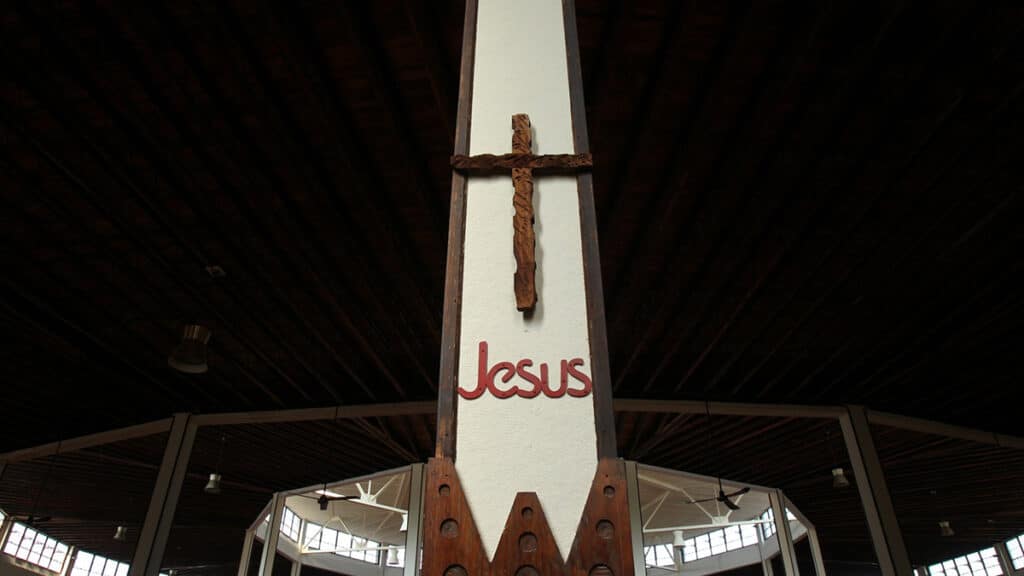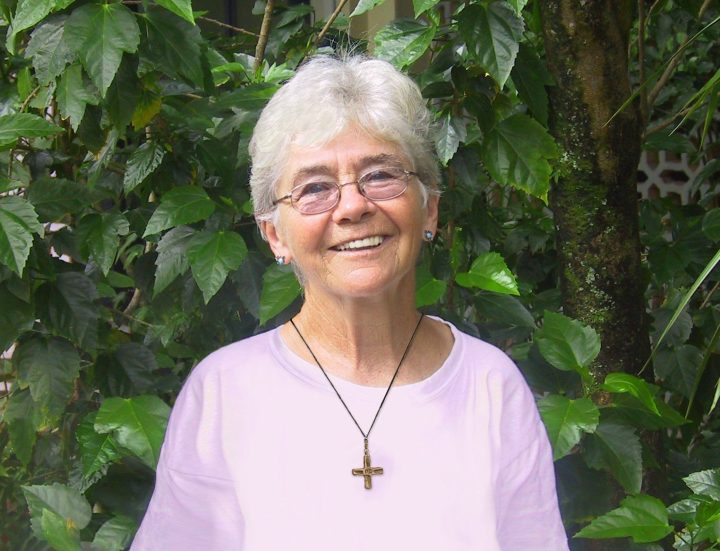
(OSV News) — The Diocese of Albany, New York, has placed a hold on parish celebrations of Mass with the 1962 Roman Missal, the older usage of the Roman rite, commonly called the “traditional Latin Mass.” The celebration of the older usage, however, will continue at the Our Lady of Martyrs Shrine in Auriesville, New York, which honors three Jesuit martyrs and St. Kateri Tekakwitha, the “lily of the Mohawk nation.”
The diocese announced the move in a Feb. 27 statement, following a Feb. 21 clarification from the Vatican approved by Pope Francis and signed by Cardinal Arthur Roche, prefect of the Dicastery for Divine Worship and the Discipline of the Sacraments.
The clarification, or rescript, reaffirmed Pope Francis’ July 2021 apostolic letter “Traditionis Custodes,” which reversed Pope Benedict XVI’s 2007 apostolic letter “Summorum Pontificum” that had allowed wide permissions for diocesan priests to celebrate Masses with the 1962 Roman Missal. Benedict framed the decision as one that would foster the church’s unity by pastorally providing for Catholics attached to the older usage (or “usus antiquior”) and help enrich the celebration of the 2002 Roman Missal as the “ordinary usage” of the Mass.
Pope Francis, however, rolled those permissions back over concerns the older celebration of Mass was being abused to harm the church’s “ecclesial communion,” including undermining the authority of the Second Vatican Council and the post-conciliar reform of the Roman rite. He declared the liturgical books promulgated by St. Paul VI and St. John Paul II following Vatican II are “the unique expression of the ‘lex orandi’ (‘law of worship’) of the Roman rite.”
The rescript clarifies that priests ordained after the publication of “Traditiones Custodes” must receive direct permission from the Vatican to celebrate Mass with the 1962 missal. Bishops also may not establish personal parishes for Catholics attached to the older form of the Roman rite, or allow its celebrations in parish churches.
The Diocese of Albany’s announcement affects two parishes: Holy Family Parish in Little Falls and St. Ann Parish in Fort Ann.
St. Ann’s parochial vicar, Father Zachariah Chichester, declined to comment to OSV News. A call by OSV News to Holy Family pastor Father Brian Siezak was not returned.
“To be clear, this is not a ban on Latin Masses,” the diocese said in its statement, pointing out the Latin Mass with the 2002 Roman missal “can and is still being performed.”
The diocese emphasized that older celebrations of the Latin Mass also are not banned “if suitable venues can be found within the current parameters of the rules. As our statement says, we are exploring possibilities.”
In the meantime, the diocese said Masses with the 1962 missal “can continue at Our Lady of the Martyrs Shrine in Auriesville (New York), which is not a parish church in the diocese.” The shrine is owned and operated by an independent nonprofit. It currently is closed for the season, with plans to resume activities in May.
The diocese’s decision does not affect the celebration of Mass in Latin according to the Carmelite rite at St. Joseph Church in Troy, New York, which is served by the Carmelites of the Ancient Observance. Parish staff told OSV News that “over 200 individuals,” including large groups of families, attend Sunday Mass in the Carmelite rite. The staff said Carmelite Father Joseph Phuong Ngo explained the parish is “not affected by this restriction because we are Carmelites.”
Most Catholics worldwide celebrate Mass with the post-conciliar reform of the Roman Missal. In the U.S., which has the most “traditional Latin Masses” of any country, an estimated 150,000 Catholics worship in the older rite every Sunday — close to 1% of U.S. Catholic Sunday weekly Massgoers — with a strong young adult presence driving the movement.
Albany diocesan Catholics attached to the older forms of the Roman rite told OSV News they were deeply pained by the diocese’s announcement.
Trudy Michelin, a member of the Cathedral of the Immaculate Conception in Albany who regularly drove well over an hour to Holy Family each Sunday, described the decision to suspend celebrations of the “usus antiquior” as “hurtful.”
A mother of four, Michelin said her 8-year-old son had been “working hard to learn” the older form of the Roman rite in Latin, which she hoped would “come back sooner or later.”
Michelin said that “while there is nothing untrue” in the normative form of the Mass celebrated according to the 2002 missal, she felt the older form found in the 1962 missal offered her a more theologically robust form of the liturgy.
“The parts (the 2002 missal) leaves out are very important,” she said, “like ascending the holy mountain, needing to meaningfully acknowledge our unworthiness to approach, the importance of John the Baptist and his call for repentance. … If we don’t think we need mercy, then we don’t appreciate mercy.”
Although the 2002 missal can be celebrated in Latin, it has main features not available in the 1962 missal and vice versa. The post-conciliar missal has the three-year lectionary, for example, to give Catholics a richer encounter with Scripture at Mass, while the pre-conciliar 1962 missal has “Prayers at the Foot of the Altar,” the ancient Roman offertory, and the recitation of John’s prologue called the “Last Gospel.”
Cardinal Roche’s immediate predecessor, Cardinal Robert Sarah, had suggested in 2015 the creation of an appendix to the 2002 Roman Missal, that would allow some of the older missal’s features to be used as “options” in the newer missal at the celebrant’s discretion. However, Cardinal Sarah left office in 2021 without the proposal seeing fruition.
Albany area resident Peter Ranalli, who has attended Mass with the 1962 missal since 2006, said even if the Mass were celebrated in Latin with the 2002 missal, it would not have features he finds spiritually beneficial to him. He viewed the older form’s one-year liturgical cycle of readings as “much more preferable than the three-year cycle” developed for the post-conciliar reform of the Mass, since it “allows greater intimacy, with repetition year after year that helps build and develop our romance with the Lord.”
Ranalli told OSV News he had sympathy for Albany Bishop Edward B. Scharfenberger “and all bishops in fact” whose ability to pastorally care for Catholics attached to the older forms of the Mass have been “really hampered by some of the restrictions Rome has placed upon them.”
“Most bishops really want to accommodate the traditional Latin Mass, and Bishop Scharfenberger has done that well in the past,” he said.
Still, Ranelli wished the bishop “could have taken some more time to think about creative ways to respond to the rescript before … restricting the use of this Mass.”
Even so, for Catholics attached to the older form of Roman rite liturgy, its sudden end has introduced traumas in their relationship with the church.
“I wish people understood that we do not believe in a different religion,” said Michelin. She, along with Ranalli, is now considering attending Divine Liturgies at nearby Ukrainian Catholic parishes.
“We’re nothing other than faithful Catholics. There’s nothing in the Vatican II documents that overturns anything in the ‘usus antiquior,’” said Michelin. “It’s so weird to feel like you don’t belong in your own church.”
Gina Christian is a national reporter for OSV News. Follow her on Twitter at @GinaJesseReina. Peter Jesserer Smith, national news editor for OSV News, contributed to this report.


